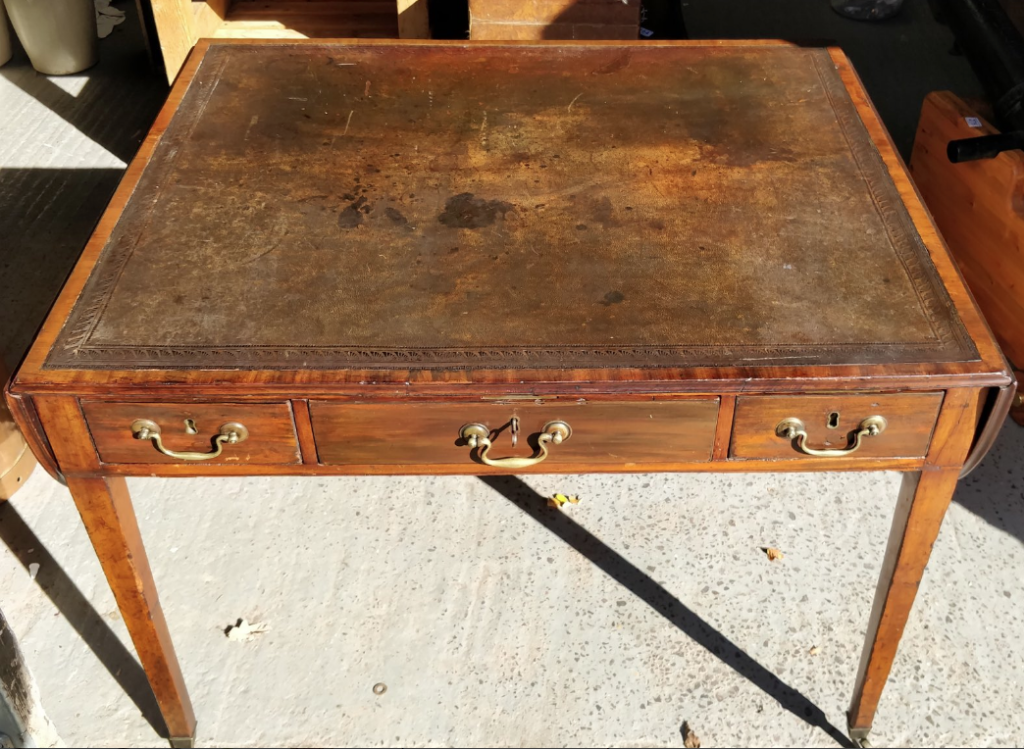Antiques Trade Talks – Gareth Wasp of Cooper & Tanner
 Somerset-based Gareth Wasp is an auctioneer and valuer at Cooper & Tanner salesrooms, alongside being an off-screen antiques valuer for the BBC, and self-confessed lover of all antiques
Somerset-based Gareth Wasp is an auctioneer and valuer at Cooper & Tanner salesrooms, alongside being an off-screen antiques valuer for the BBC, and self-confessed lover of all antiques
What areas/items are currently selling well?
Vinyl records are selling really well with people wanting to go back to an anologue sound rather than the perfection of digital. Scandinavian and modern design furniture, particularly the likes of Ercol & G Plan with that minimal look. 1970s’ electronics are making a comeback, from the likes of Bang & Olsen which were expensive and are making a resurgence in value again. Taxidermy is also still very strong on the market, with Hotels and restaurants fitting out their premises and making it ‘trendy’.
What do you think are the current ‘good investment’ items – ones to watch?
I think novelty silver is always a good investment. Scandinavian Jewellery is in demand and I believe it’s an excellent investment with makers such as Anton Michelson, Bjorn Weckstrom. Postwar silver has been on the rise in the last 10 years. Mariam Hanid silver pieces are beautiful and creative. John Kelly 1880 has a great range of items and I have personally invested in some.
What antiques do you have at home?

I have a complete range, from 1980s’ toys to George IV writing desk, which I absolutely love; Poole Pottery; an Ercol day bed; an arts and crafts side table, and so the list goes on. The contents of my house has recently been compared to a museum!
What do you think will be the antiques of the future?

90s’ and 00s’ toys are seeing an increase in value now and I think these will be the collectables of the future. Anything social/political history related will increase in value and demand; I purchased some political poster with subjects including apartheid and the Russian space race. I think the more modern posters, music flyers, etc, will also see an increase.
How is the industry changing and what will it look like in the future?
The internet has been the biggest factor in the way the industry has changed; it’s far more diverse and accessible now, wherever you live in the world. This will continue to shape auctioneers, but I think there will always be a place for physically viewing and attending an auction.
What are your top tips for buying antiques?

Research, research, research. This business is about investing, learning and making mistakes. Research is all about that and plays a massive part; don’t be afraid about making mistakes but make sure that you learn from them and you have to be prepared to take risks.
What antiques/artworks would you buy if money were no object?
I would fill my house with antiques that’s for sure with the emphasis on decorative arts! I would also buy as many pieces of silver from any Goldsmiths Hall Exhibitions to support our up and coming silversmiths.
You’re down to your last 50 quid – what antiques/art would you buy?
A 1980s toy to remind me of my ‘yoof’!
Where are your favourite antique hunting destinations?
Malvern Flea is excellent, I always buy antiques for my house there and absolutely love it. Rolfey’s of Bath has a great choice of items. For silverware, John Kelly 1880 and Michael Baggott have some beautiful yet affordable items.
What are some of the biggest mistakes that buyers make?

Not researching enough! Condition is highly important, also collectors and dealers want things in good condition, otherwise the value decreases rapidly and this must be taken into account when making a purchase.
Do antiques appeal to young buyers and, if not, how can the industry reach out to them?
I think antiques do appeal to younger people, my friend has started collecting brown furniture. There is no comparison in quality, value for money, or history than buying antiques, rather than the modern, mass-produced furniture from Ikea and Oak Furnitureland, etc.
There is no need to produce new furniture when you have auctions, dealers, flea markets and antiques that offer such a wide variety at lower cost. I visit many fairs in my spare time and see many young people. Auctions can be daunting, but really needn’t be; we welcome new buyers every week! I have even managed to take many of my friends to auction to buy and sell and they have all enjoyed it. If we want this business to grow and expand we must do everything we can to give us the best possible chance of doing so.

